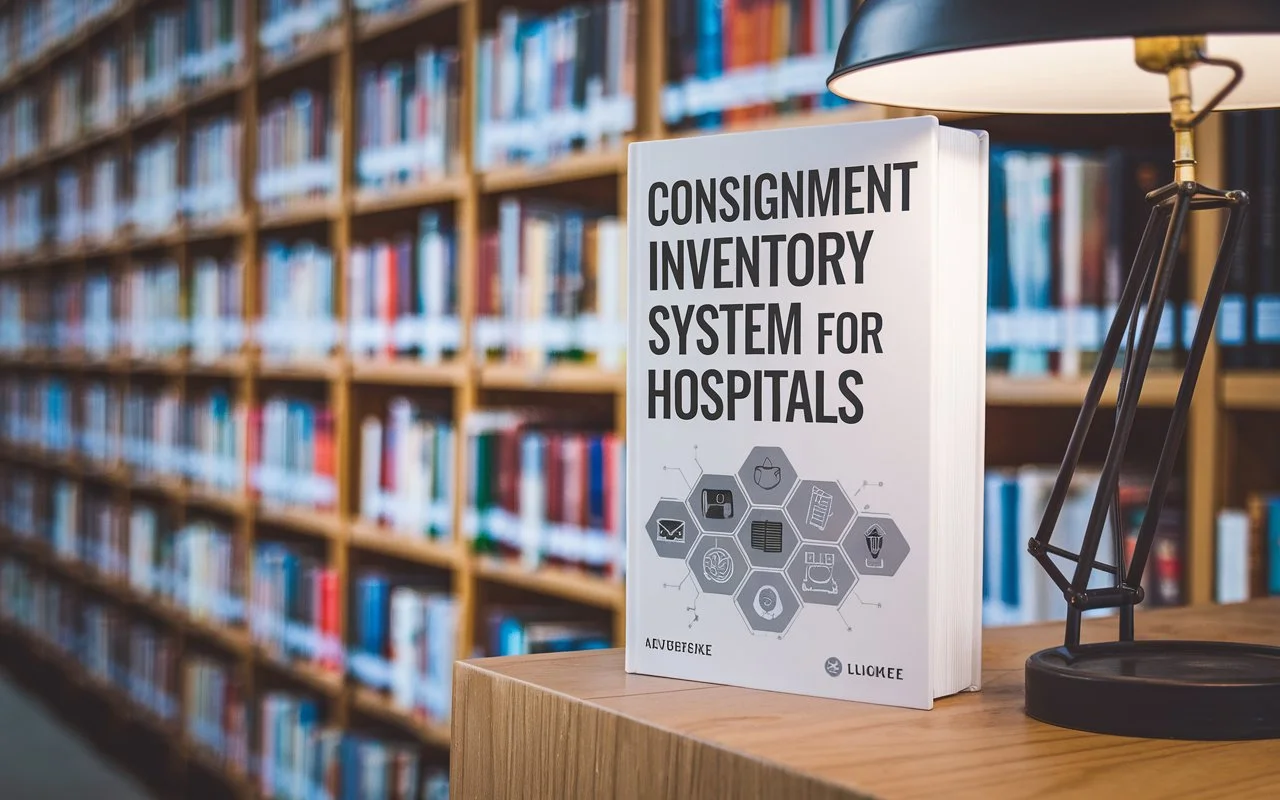Effective inventory management in hospitals is crucial for enhancing financial performance, reducing operational expenses, and ensuring quality patient care. For medical professionals seeking solutions, a book on consignment inventory system for hospitals serves as an invaluable resource. This book delves into the nuances of consignment inventory, offering strategies for hospitals to optimize their purchasing processes, minimize waste, and achieve better financial outcomes. By exploring the principles in book on consignment inventory system for hospitals, healthcare facilities can streamline their operations and improve efficiency.
What Is Consignment Inventory?
Consignment inventory is a system in which a supplier sells items to a hospital but retains ownership until the hospital uses or sells them. This arrangement enables hospitals to keep essential medical supplies on hand without making an immediate purchase. Since hospitals pay for expensive products such as surgical implants or medical instruments only after using them, consignment inventory proves especially useful in the healthcare industry.
How A Book on Consignment Inventory System for Hospitals Adds Value
- Books that concentrate on hospital consignment inventory systems explore crucial topics such as:
- Detailed hospital inventory examples:examples of actual situations where consignment inventory is successful.
- Journal entries for consignment inventory:Accounting techniques for tracking consignment merchandise are explained in detail.
- Consignment stock formulas:Useful computations to preserve ideal stock levels.
- Cost-saving strategies:Details on how ordering and receiving expenses are reduced using consignment inventory.
Such a book can offer practical methods and tried-and-true frameworks to enhance your hospital’s inventory procedures, regardless of your role as administrator, pharmacist, or inventory manager.
Why Hospitals Need Consignment Inventory Systems
- From expensive implants to syringes and gloves, hospitals deal with a vast array of medical and surgical materials. Waste, understocking, and overstocking become frequent issues in the absence of a systematic inventory system. A consignment inventory system is crucial for the following reasons:
- Risk Reduction:By only paying for what they utilise, hospitals lower their financial risk.
- Improved Cash Flow: Delaying payments until goods are consumed lessens budgetary restrictions.
- Real-Time Tracking: Modern systems enable accurate tracking of inventory levels.
- Better Resource Allocation: Cash flow that has been freed up can be used for infrastructure and patient care.
Hospital Inventory Example: Consignment in Action
Think of a medical facility that collaborates with a surgical implant provider. Rather of buying implants all at once, the supplier adds a set amount to the hospital’s inventory.
- Usage:During surgeries, surgeons use the implants as needed.
- Payment:Only the implants that are used are paid for by the hospital to the supplier.
- Stock Replenishment:To prevent shortages, the supplier keeps an eye on stock levels and restocks them.
This concept removes the risk of holding outdated goods in addition to guaranteeing availability.
What Is the Journal Entry for Consignment Inventory?
Consignment inventory accounting requires special journal entries to capture the distinct characteristics of ownership and use.
- When Inventory Is Received:
- No purchase is recordedin the hospital’s records, since the provider retains ownership.The inventory is instead listed as “Consigned Goods on Hand.”
- When Inventory Is Used:
- Debit: Cost of Goods Sold (COGS)
- Credit: Consigned Goods on Hand
These entries guarantee that the hospital only records expenses for goods used, in accordance with the pay-as-you-use principle.
Purchasing and Inventory Control in Hospital Pharmacy
Hospital pharmacies are essential because they make sure that drugs and related supplies are available.Hospital pharmacists’ efficient purchasing and inventory management directly impact patient outcomes.
- Forecasting Demand:Advanced systems forecast trends of medicine use.
- Supplier Agreements:Consignment agreements and other long-term contracts lower expenses.
- Minimizing Expiry:Waste is decreased by maintaining stock levels in line with usage patterns.
To assist pharmacy managers in successfully putting these tactics into practice, books on the subject frequently provide thorough examples and slides.8
Purchasing Distribution and Control of Hospital Medicines and Supplies
A well-structured book on hospital consignment inventory systems also covers the broader picture of purchasing distribution and management. It looks into:
- Procurement Best Practices:Selecting trustworthy vendors and haggling over terms..
- Inventory Turnover:maintaining a constant supply of consumables without going overboard.
- Distribution Systems:simplifying the process by which departments receive surgical supplies and medications from suppliers.
The Costs of Ordering and Receiving Inventory
Conventional inventory models need upfront purchases, which come with a number of expenses, including:
- Order Processing Fees:procurement-related administrative expenses.
- Holding Costs:costs for possible obsolescence, insurance, and storage.
- Receiving Costs:Systems and labour for inventory storage and verification.
Hospitals gain when many of these expenses are transferred to the supplier through a consignment system.
Optimizing Inventory with Consignment Stock Formula
Hospitals can maintain the proper inventory balance with the aid of a consignment stock formula. This formula takes into account:
- Lead Time:Restocking takes time.
- Usage Rate:Average consumption over a given time frame.
- Safety Stock:Extra inventory to meet unforeseen demand.
For example: markdown
CopyEdit
Reorder Level = (Average Usage x Lead Time) + Safety Stock
Without going overboard, this approach guarantees that hospitals always have enough inventory.
FAQs
What is consignment inventory?
Under a consignment inventory system, the supplier owns the products until the customer, like a hospital, uses or sells them.
What is the journal entry for consignment inventory?
When receiving inventory, record it as “Consigned Goods on Hand.” After use, transfer the expense to “Cost of Goods Sold.”
How does consignment inventory benefit hospitals?
It guarantees the availability of necessary supplies without the burden of upfront payments, lowers financial risk, and enhances cash flow.
What is a consignment stock formula?
Reorder levels are calculated by considering safety stock, lead time, and utilization rates.
Why is purchasing and inventory control important in hospital pharmacies?
It minimises waste, maximises expenses, and guarantees the timely provision of pharmaceuticals.
How does consignment impact the costs of ordering and receiving inventory?
It saves hospitals a lot of money by shifting numerous costs, including holding and receiving charges, to the supplier.
Conclusion
A well-written book on the consignment inventory system for hospitals can transform the way medical facilities manage their supplies. By adopting this system, hospitals can ensure operational effectiveness, reduce waste, and prioritize patient care without being constrained by budgetary limitations. Taking the time to learn about and implement consignment inventory systems can revolutionize your hospital’s operations, especially if you work in the healthcare industry.











